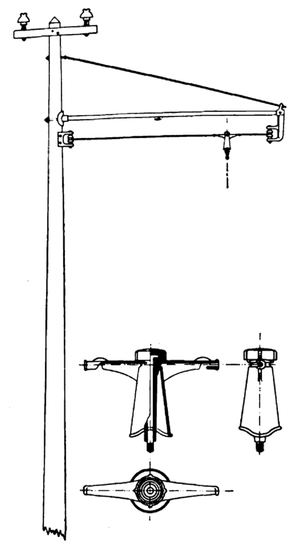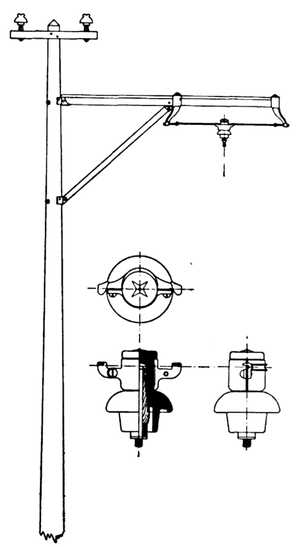[Trade Journal]
Publication: Western Electrician
Chicago, IL, United States
vol. 34, no. 11, p. 211-212, col. 3,1
Single- phase Railroads. (1)
By W. A. BLANCK.
In perhaps no line of electrical industry has there been greater activity than in that of interurban-railroad construction, until, at the present time, not only throughout the whole United States, but particularly in the central states, this development has reached a magnitude entirely beyond the expectations of the most sanguine persons a decade since. In fact, this development has gone so far that in some sections most of the best propositions are already exploited; however, there are still a great many, which, while of doubtful value with the present direct-current system, involving the use of rotary-converter sub station and low-trolley voltage, will be very profit able in case a system can be developed which will materially reduce the cost per mile. For some time the perfection of a single-phase motor has been suggested as the solution of this problem, since it allows great reduction in the cost of the transmission system.
·
·
·
·
Trolley-line Construction. — Great care given to the construction of the high - tension trolley line in order to avoid damages to life and property. Notwithstanding the prevalent idea that the danger of these high-tension trolleys will handicap the development of alternating -current railroads operated over public property, there is no reason why they should not be made as safe as the high - tension distributing systems of lighting companies now so common on public property. It is of first importance to provide such a hanger as shall readily withstand the working pressure of the system and can be easily replaced in case of mechanical or electrical defect.
 |
| Fig, 6. Valtellina Trolley-Line Construction. |
Fig. 6 shows a trolley-line construction with hangers similar to that used on the Valtellina railroad. The bolt carrying the trolley clamp is surrounded by an insulating compound, called amborine, and set into a malleable iron bell provided with clamp arms to secure it to the span wire. A cast-iron cap-screw holds the insulated bolt firmly in place.
 |
| Fig. 7. Lansing-St. John Trolley-Line Construction. |
Another construction, used on the Lansing-St. Johns road in Michigan, is shown in Fig. 7. The hanger consists here of a special high-tension glass insulator fastened to the span wire in the usual way. The working conductor is carried by an iron pin inserted in a wooden sleeve, on which a thread is turned to fit the glass of the insulator. A thin lead bushing allows the insulator to be firmly clamped by the malleable iron supports, thus preventing the hanger from jarring loose.
·
·
·
·
(1) A paper read before the Cincinnati branch of the American Institute of Electrical Engineers, February 15, 1904.
